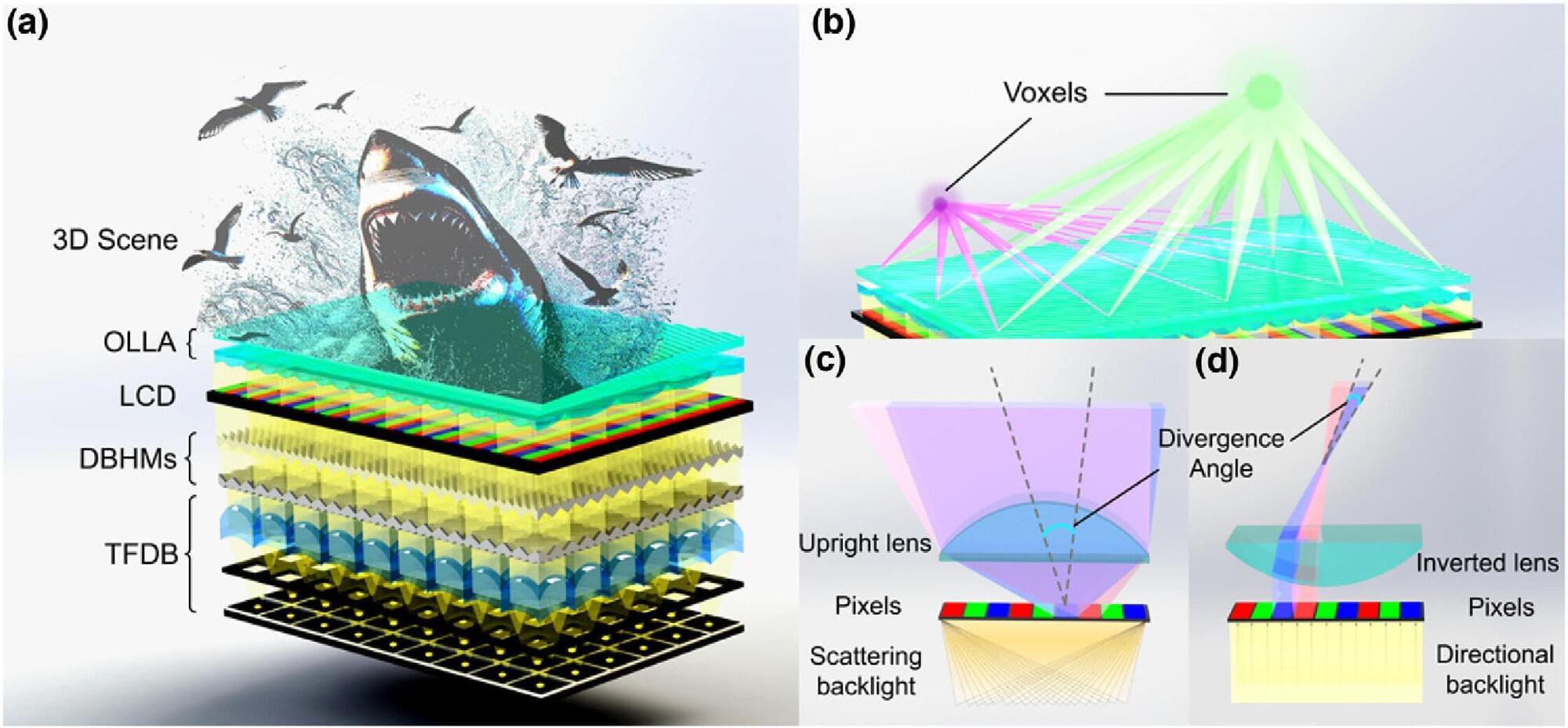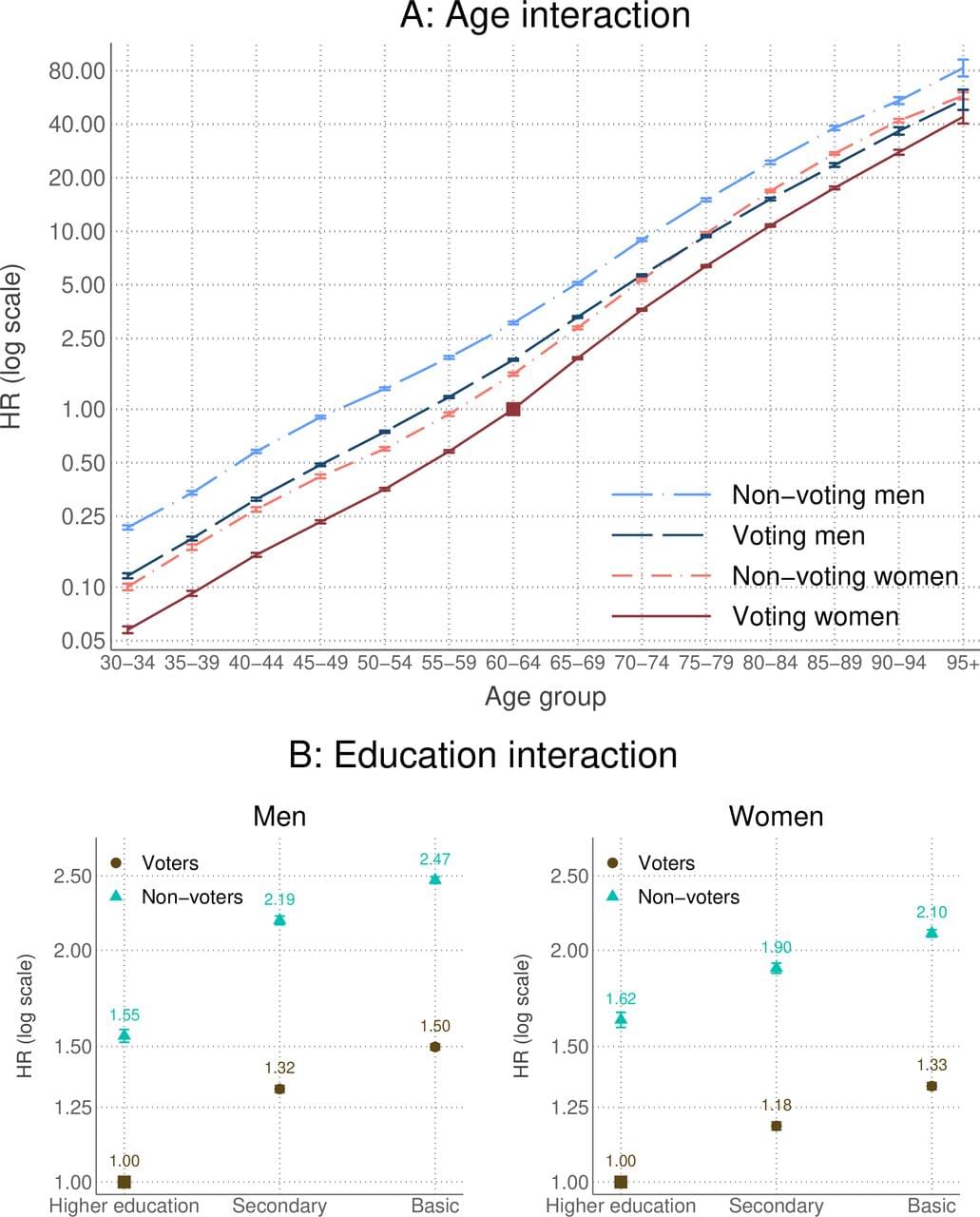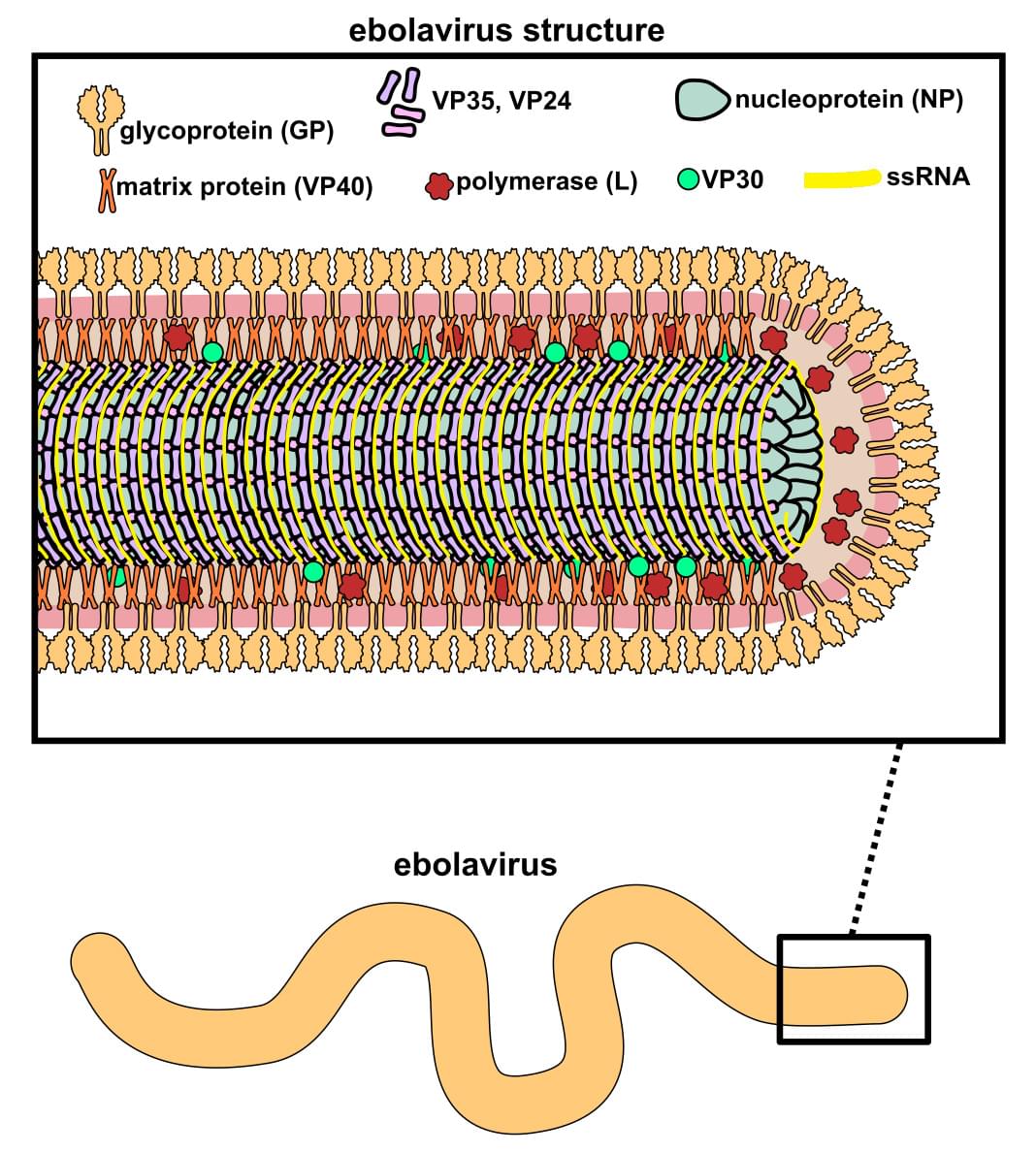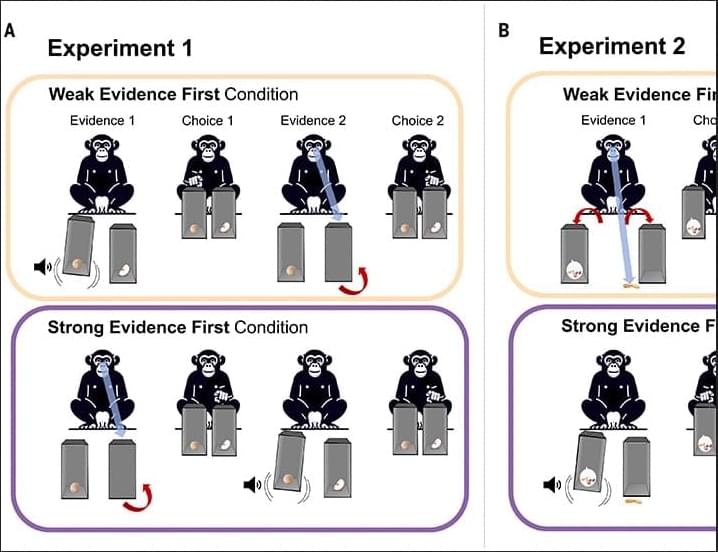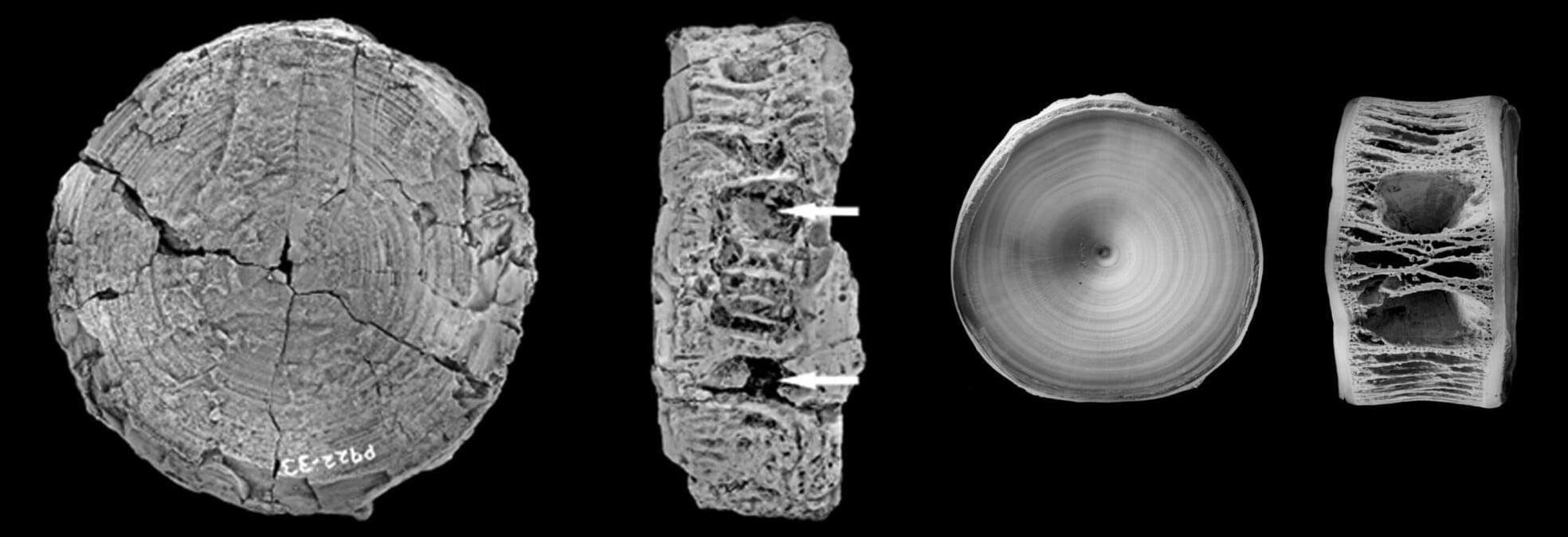Researchers have developed an ultra-thin 3D display with a wide viewing angle, clear image quality and vivid display depth. By overcoming tradeoffs that typically limit glasses-free 3D displays, the advance could open new possibilities for highly detailed interactive experiences in health care, education and entertainment.
“The new display is just 28 mm thick, dramatically slimmer than conventional directional backlight systems, which typically exceed 500 mm,” said research team leader Xu Liu, from Zhejiang University in China. “This level of compactness, combined with the substantial boost in resolution we achieved, represents an important step toward making the technology practical for real-world products.”
In Optica, the researchers demonstrate an ultra-slim 32-inch directional backlight-based prototype based on the new display design. The prototype is roughly the size of a large computer monitor, has a wide viewing angle of over 120° and a large 3D display volume of 28 × 16 × 39 inches.
